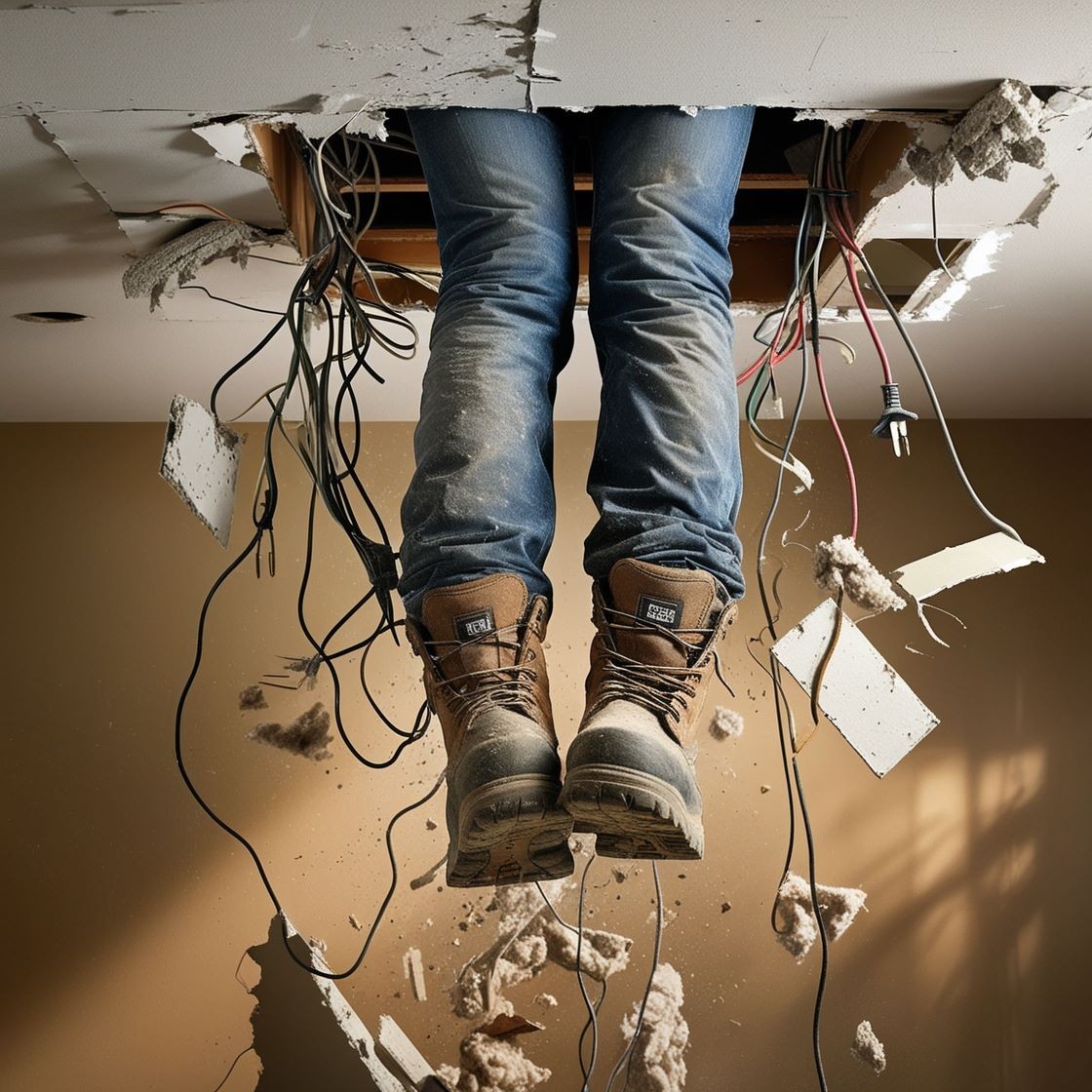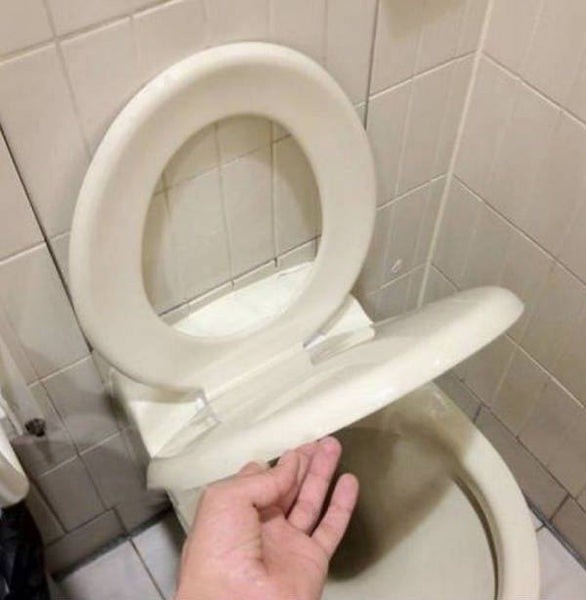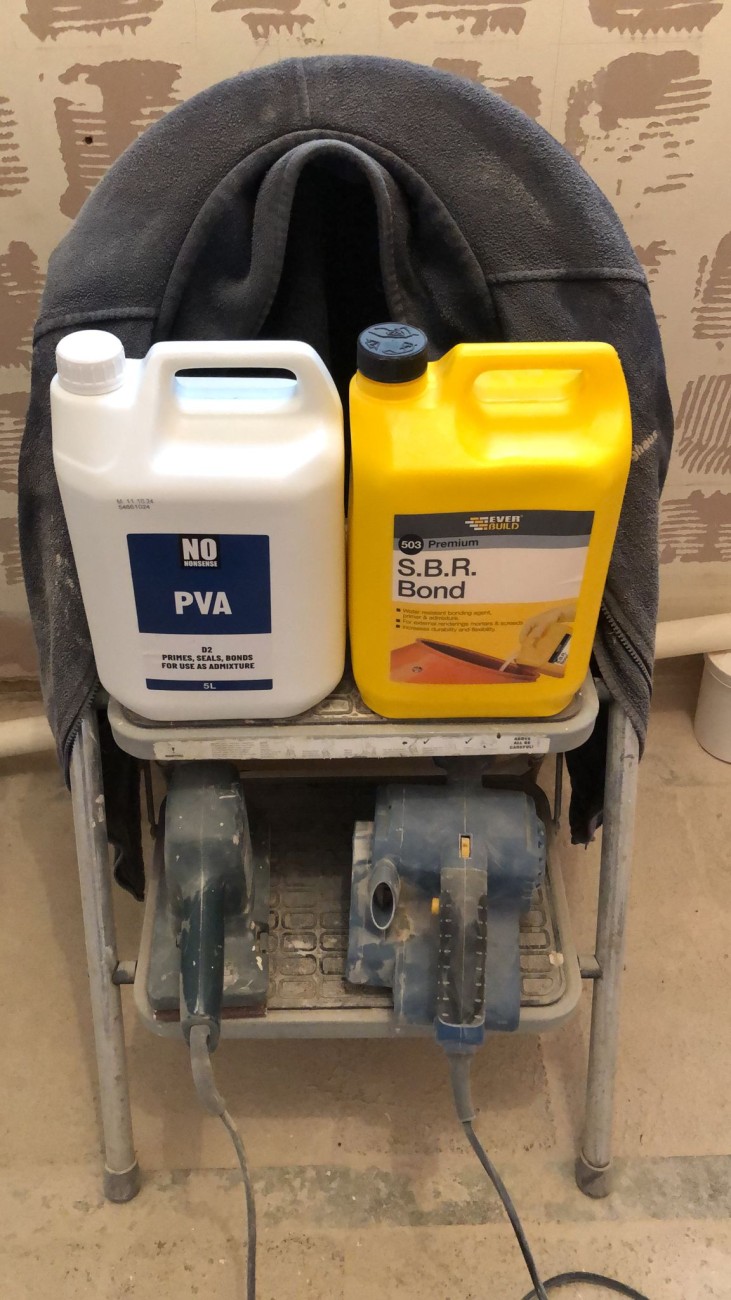
So, having stripped the old bathroom suite out, including the chipboard floor that is a material not compatible with water leaks. But it really, really does adhere well to ceramic tiles, in that you cannot separate the two.
I have more easily taken the wall tiles off and numerous of them have brought big chunks of plaster with them. I am now of the opinion that this is as much as I want to do, so I call a professional, with a view to getting a quote for fitting a new suite: a free standing bath instead of shower, I am still not certain that is a wise move: My wife is engaging brain more than me and says that as you get older, stepping in and out of a bath is not easy, and that ‘comfort’ (slightly raised) toilets are easier to get on and off: Holy hell, shoot me now.

I then felt guilty with the thought that I can do all this work, I have fitted numerous bathrooms before. But there is this nagging doubt: in recalling that once again, you will be heading in the direction of even more DIY disaster stories.
I finally managed to dispose of the old hand basin and toilet. I did consider fly tipping them, as I know they would allow only one item to be disposed of for free, at our local Recycle Centre. I did approach two of the larger centres locally to see if they could be resold in their shop, as I had heard coloured suites were back in vogue. The guy at the first Recycle Centre thought I must be mad, but said I could dispose of one item for free, so in the skip went the cistern.
We then drove to the second Recycle Centre on the way home. There seemed no point in asking if they would want to try and sell the hand basin and stand in champagne, in view of the bog now not being available. So that went in the skip there, which was already full of similar items.
I guess the first disaster story should be the mastic stain on the back seat of my car. We have two dogs in the boot, so the old WC and hand basin had to go on the back seat, separated by clothes to stop them clinking against each other. And despite having a cover under, I still managed to get mastic on the seat. Good job it is leather and thus easy to clean. Notes to self: never not have leather seats. In future leave the dogs at home and just dump that lot in a ditch.
So, the bathroom is now a blank canvas as the Estate Agents like to say. I know there is no way I am capable of replastering those two walls that were once tiled. So, I went in search of a recommended plasterer. The first name and number given was sent a video clip of the bathroom walls, and calls back as arranged, which is always a good way to start a relationship with a tradesman. He says he can do it, but he is that busy, that it will be Christmas week before he can fit it in. Now, I like dragging things out, but the Latvian contingent is coming for Christmas, and it would be good to have an additional functioning WC, as the youngest son does drag his No 2s out for eons.
I tell plasterer No 1 that the guy who was going to do the whole bathroom, has offered to do the plastering only, and suggests using SBR rather than PVA for sealing the existing plaster. But as the wall will be painted, rather than tiled or covered with the more modern waterproof sheets, it needs to have a good finish. Plasterer No 1 says that as that guy has suggested using SBR, then he probably knows what he is doing.
I am not convinced, so I go for a second plastering quote, this time an old boy from the village, he comes over, on the agreed time, which is always a great start to a relationship with a tradesman. He gives a quote that is reasonable (according to the friend who recommended plasterer No1) but I base quotes that everything will cost £50 plus materials. Obviously, it is not just the bathroom suite that is stuck in the 1970s.
So, I finally get to the title of this article: PVA versus SBR. Plasterer No 2 says I can coat it in a watered down PVA ahead of him coming to do the plastering. Oh my, he is suggesting PVA, when No 1 plasterer thought a good plasterer goes with SBR!
Time to fire up Google:
PVA is Polyvinyl Acetate (PA in my world) PVA is what we once called wood glue, and I remember using it in woodwork lessons for mortar & tenon joints, so I know from those hand fisted days, that you can wash it off those hands.
SBR is Styrene Butadiene Rubber (a correct initialism)

So, having read some more details on Google, where I note that PVA is water soluble, so after applying to the original plaster, and allowing to dry, the application of the wet plaster reactivates the PVA and makes it adhere better.
Having already bought 5L of SBR and reading the label (it’s not often I do that) and realising that it needs applying 15 mins before applying the plaster. I was convinced PVA should be used.
I usually do my research on availability beforehand, but we set off to buy some from Howdens, which I now know closes at lunchtime on a Saturdays! OK, lets buy it from Screwfix. On asking whether they sold it, the lass behind the counter swivels the screen to let me see what choices there were: obviously too many. The most expensive is only available next day, so I went with the higher priced of the other two options, of both the same brand.
Only when I got home, do I read the label. it turns out it is ‘waterproof’! How the hell does that work? where the water solubility creates the adhesive process! And how do you thin it down?
It went back.
I feel I have already had a few DIY disasters, and I haven’t even started.